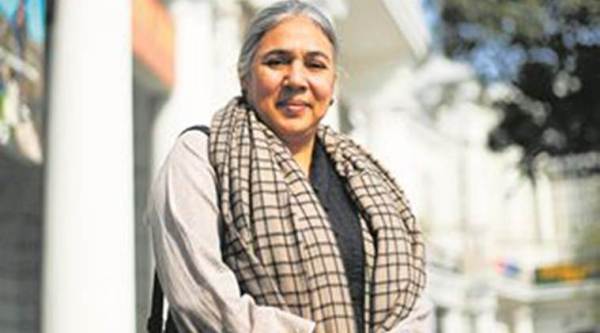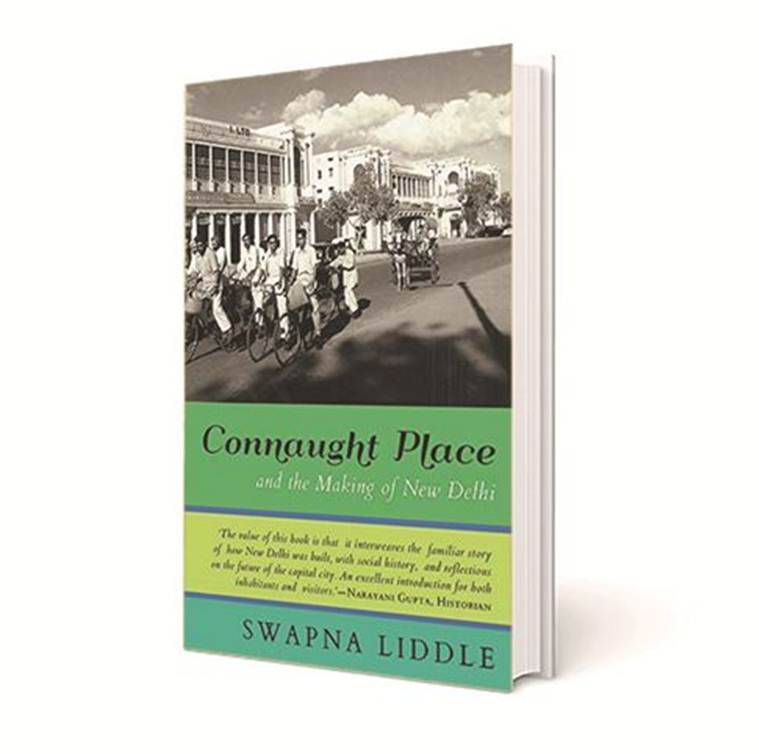Written by Surbhi Gupta |Published: January 11, 2019 12:20:51 am
Story of a Living City
Historian Swapna Liddle’s latest book maps the making of Connaught Place, the colonial capital of New Delhi.

The iconic shopping and recreational remnant of the colonial Capital is bustling. Roadside vendors call out to prospective buyers, showrooms display discounts and people ramble about the many restaurants and bars. We are walking along with historian and author Swapna Liddle, who has a map from the 1960s. “Can you believe there was an Austro-Hungarian restaurant, La Boheme, that was run by the Nirula’s here, in the 1960s? I think there’s a Haldiram’s there now,” she says. Connaught Place (CP) was a shopping complex for the elite, she says, pointing to the advertisement of Enid, that sold “charming evening frocks, afternoon frocks, suits and millinery”. She has reproduced it in her latest book, Connaught Place and the Making of New Delhi (Rs 499, Speaking Tiger). After recounting the story of Shahjahanabad in Chandni Chowk: The Mughal City of New Delhi (2017), Liddle starts the story of New Delhi at the beginning, when the idea of shifting the capital from Calcutta to Delhi first struck the colonial rulers. It examines the process of its planning and building, people who played important roles, the social life and its eventual transformation over the years. “Unlike Shahjahanabad, New Delhi is not a walk-able city, it was built in the age of motor car,” says Liddle, as we stroll around CP, basking in the winter sun. It is as a tribute to architect Edwin L Lutyens, who was instrumental in planning the area, that we call it Lutyens’ Delhi.

“The making of Connaught Place was revolutionary for its time as it was built with private investment, and the blocks were sold individually. But the design was done by the government. Even if you look at the palaces of the princely states, the architecture was dictated by the board of architects so that it would gel with other buildings,” says Liddle, who has also written Delhi: 14 Historic Walks (2011) and is the conveyor of the Delhi chapter of Indian National Trust for Art and Cultural Heritage (INTACH).
As we walk to the Central Park, she reckons how the open area within the inner circle was covered by expansive lawns, and in the centre was a bandstand, similar to those in many British colonial stations in India. “Music was played every Saturday from the middle of October to mid-April, during the Delhi season, when officials descended from their summer sojourn in Shimla,” she says. When we reach the Regal theatre, which was shut down in 2017, Liddle says that the building was also quite ahead of its time. Similar to the malls of today, Regal at that time, housed restaurants, shops and a movie theatre. “I think spaces like CP and Khan Market, maybe upmarket shopping complexes, are better than the malls for they are more inclusive. If there is a fine-dining restaurant, there is also a fruit seller with his push cart,” she says.
Charting the changes in the colonial city, she says that post-independence, apart from the names of the roads being changed and statues being removed, there was an expansion of office spaces and housing complexes. “Buildings like Nirman Bhavan and Udyog Bhavan were built then and colonies like Kaka Nagar, Bapa Nagar, and Pandara Park came up. The area what has now become Pragati Maidan, was supposed to be for fuel plantation, but the Indian government wanted a space for trade fairs,” she says.
There are archival photographs in the book which show the villages that inhabited the now green lawns of Purana Qila and Humayan’s Tomb complex.






















No hay comentarios:
Publicar un comentario